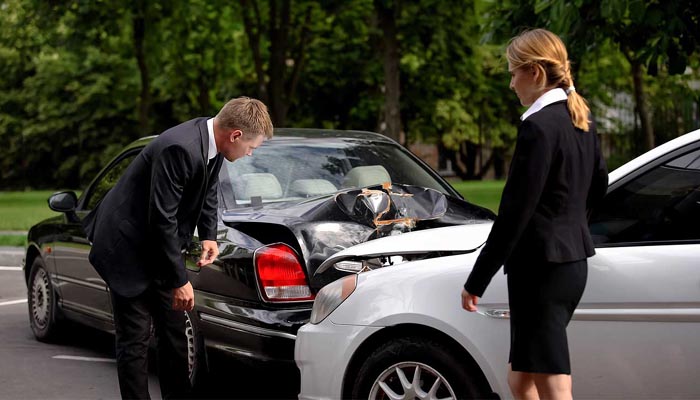If you obtain your driver’s license, you might get through many years and never hit another car, and another vehicle never hits you, either. If so, that probably means you’re a good driver, but maybe you have some luck as well. Even if you drive very safely, some other driver you encounter might break a law or act recklessly and hit your vehicle.
Different car accident varieties can happen. A car might T-bone your vehicle. You might hit another car head-to-head. This sometimes happens if a drunk driver tries getting onto the highway by driving up an exit-only ramp.
The NHTSA says rear-end accidents are the most common kinds of car accidents, though. We’ll discuss them right now, and we’ll also run through how you can prevent them.

What is a Rear-End Car Accident?
Rear-end car accidents happen when a vehicle approaches another vehicle from behind. Both vehicles and drivers face the same direction. One car’s front bumper strikes the other car’s rear bumper.
When this happens, the car approaching the other vehicle might hit its rear bumper going very slowly or very fast. Usually, if a high-speed collision occurs, the rear driver lets something distract them. When the car up ahead stops, the rear car’s driver can’t hit the brakes in time and plows into the car ahead of them.
Other times, the car ahead stops suddenly on the highway. Maybe a deer or some other animal runs across the road. If the rear car’s driver doesn’t have some distance between the two vehicles, that makes a collision much more likely.
Tailgating
Tailgating often causes these accidents. Tailgating means the rear driver rides the car’s bumper ahead of them.
If you attend any driving school, the teacher should tell you that tailgating isn’t friendly or advisable. It’s aggressive driving, and you shouldn’t do it.
Defensive driving means maintaining at least one full car length between yourself and the vehicle up ahead. Unfortunately, not enough people do that.
On the highway, if a driver exceeds the speed limit in the fast lane, they might ride another car’s bumper. They may even blow their horn at them or flash their lights to get that car out of their way.
This behavior makes rear-end collisions likely. Remember, though, the car up ahead needn’t get into the slow lane. They can if they want, but if they’re driving the speed limit and no faster, they’re breaking no laws.
The vehicle behind them isn’t behaving safely, and they’re courting disaster. A fender bender might happen if the car up ahead brakes suddenly, and the rear vehicle hitting that rear bumper might cause whiplash or more serious injuries. If a driver hits another car from behind by driving this way, they might have a personal injury lawsuit on their hands.
How Can You Avoid These Accidents?
Defensive driving prevents these accidents more than anything else. If you leave one car length between your vehicle and the one in front, when they hit the brakes suddenly, you probably won’t strike them.
Tailgating isn’t very nice, and you can simply go around a slow car in the passing lane when you get the chance. It serves the same purpose, but you’re keeping yourself and the other driver safe, and their passengers as well.
If someone drives slowly in the highway’s fast lane, and you tailgate them, maybe they can’t get over right then because there’s traffic on their right, blocking them. They may have an older car that can’t speed up very fast. They may also not want to break the speed limit because they already have some
points on their license.
You can avoid rear-end collisions on local roads by watching the cars around you and ahead of you. Don’t let your smartphone or anything else distract you.
You might hit the car’s bumper ahead if you’re not paying attention, and the vehicle in front of you brakes suddenly. They might stop because a child or animal crosses the road, but they may also stop if a car ahead of them hits the brakes.
If you drive safely and defensively, you should avoid most rear-end collisions. By doing so, you prevent whiplash and other injuries that might occur. You also avoid potential lawsuits, which can take some of your money or even bankrupt you.
If someone rear-ends your car, and you feel they acted recklessly, you can always hire a reputable lawyer and sue them.